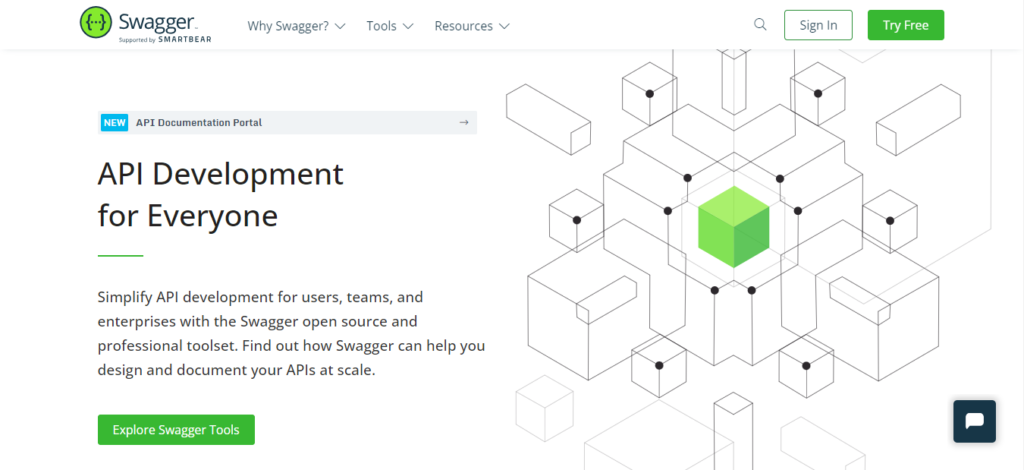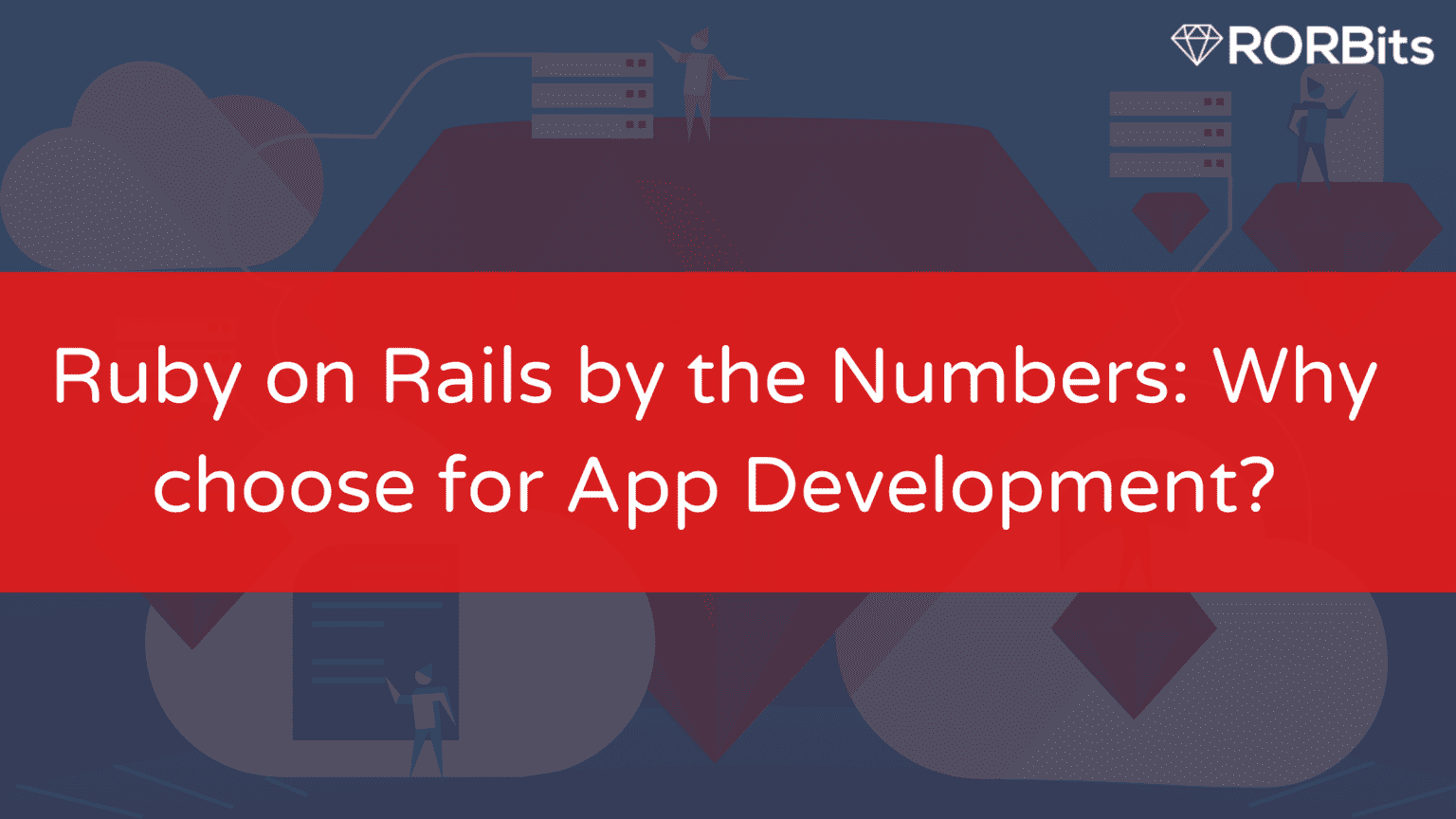In the world of web development, staying organized and ensuring seamless collaboration among team members is essential. One tool that has gained popularity for its role in achieving this is Swagger Rails.
If you’re a Ruby on Rails developer looking for the right guide on how to integrate Swagger into your development process, you’ve come to the right place.
In this article, we’ll explore the ins and outs of Swagger for Ruby on Rails, discussing its benefits, installation, best practices, and more.
Let’s dive in!
What Is Ruby on Rails?
Ruby on Rails, generally known as Rails, is a powerful open-source web application framework that uses the Ruby programming language.
It follows the Model-View-Controller (MVC) architectural pattern, making it a favourite among developers for its simplicity and efficiency. Ruby on Rails developed under MIT license.

Rails web app development emerged in 2005 due to its innovative features which includes smooth database table creations, migrations, and scaffolding of views to enable robust and fast application development.
The philosophy on which Ruby on Rails works is Convention over Configuration (CoC), and the Don’t Repeat Yourself (DRY) principle.
“Convention over Configuration” says that the developer has to specify only unconventional characteristics of the application.
For instance, if the model contains the class Sale, the database table corresponding to it will by default be called sales. Developers only need to write code for these names if one deviates from this practice, let say by calling the table “products sold.” In general, Ruby on Rails conventions result in fewer repetition of code.
The phrase “Don’t Repeat Yourself” refers to information that is contained in a single, clear location.
For instance, the developer need not include database column names in class definitions when utilizing Rails’ ActiveRecord module. Instead, Ruby on Rails can use the class name to access this data from the database.
There are numerous popular sites that use Ruby on Rails for web development. Airbnb, Dribbble, Shopify, Crunchbase, GitHub, and Twitch are some examples of well-known sites developed with Ruby on Rails. Connect with the best Ruby on Rails Development Agency like RORBits to get successful outcomes on Rails web app development.
Why Choose Ruby on Rails for Web Development?
Ruby on Rails offers several advantages for web developers, including rapid development, scalability, and a vast community of developers.
Its conventions over configuration (CoC) and don’t repeat yourself (DRY) principles contribute to writing clean and maintainable code.
Let’s see some major reasons to choose Ruby on Rails for web development:
- Productivity and Speed
- Mature Ecosystem
- Developer-Friendly
- Active Community
- Scalability
- Security
- Databases and ORM
- Testing and TDD
- Community Packages
- Cross-Platform Compatibility
- RESTful Architecture
- Cost-Effective
While Ruby on Rails is an excellent choice for web development, the choice of framework should also depend on your specific project requirements, team expertise, and long-term goals.
However, for many developers and businesses, Ruby on Rails remains a popular and reliable option for building web applications.
Similarly, let’s understand Swagger and its benefits in the next section!
What Is Swagger?
Swagger, now known as the OpenAPI Specification, is a set of rules and specifications for building and documenting RESTful APIs.

It provides a standardized way to describe the structure of an API, making it easier for both developers and non-developers to understand and use the API. The primary components of Swagger include:
- API Documentation
- API Design
- API Testing
- Code Generation
- Interactive API Exploration
Swagger simplifies the process of API development by improving communication between developers and API consumers.
It ensures that everyone has access to clear, up-to-date documentation, reducing misunderstandings and speeding up the integration of APIs into applications.
It’s widely used in the software development industry to enhance the usability and accessibility of APIs.
Benefits of Using Swagger
Swagger offers numerous benefits to developers and organizations:
Improved Documentation
Swagger generates interactive and detailed documentation automatically, saving time and effort.
Enhanced Collaboration
Team members can collaborate more efficiently with a standardized API description.
Automated Testing
Swagger simplifies the process of testing APIs, ensuring reliability.
Enhanced User Experience
Well-documented APIs lead to better user experiences, attracting and retaining users.
Now, let’s understand the major advantage of using Swagger for Ruby on Rails.
How Swagger Benefits Ruby on Rails Development
Let’s explore all the core advantages of using Swagger for the seamless Ruby on Rails API Development:
Seamless API Documentation
Integrating Swagger with Ruby on Rails ensures that your API is documented seamlessly. With Swagger, your API documentation is always up-to-date, reflecting the actual endpoints and data models.
Improved Collaboration
Collaborating with fellow developers, testers, and stakeholders becomes more accessible with Swagger. Everyone can refer to the same documentation, eliminating confusion and ensuring that all team members are on the same page.
Automated Testing
Automated testing is a breeze with Swagger. You can use Swagger’s API descriptions to generate test cases, reducing the time spent on manual testing and increasing the reliability of your API.
Enhanced User Experience
Well-documented APIs lead to a better user experience. Users, whether internal or external, can easily understand how to interact with your API, resulting in more satisfied customers.
If you want to embrace all the Swagger Rails benefits for your API Documentation, then you should Hire Ruby on Rails Developer from RORBits on a monthly or hourly basis as per your requirement. They have vast experience in ROR development.
Getting Started with Swagger for Ruby on Rails
Installation and Setup
To get started with Swagger in Ruby on Rails, you need to install the necessary gems and configure your application. Follow these simple steps to set up Swagger:
- Install the ‘swagger-blocks’ gem by adding it to your Gemfile and running bundle install.
- Create a Swagger documentation file (e.g., swagger_docs.rb) to define your API documentation structure.
- Configure your application to use Swagger UI for interactive API documentation.
- Creating API Endpoints
- Once you’ve set up Swagger, start creating your API endpoints. Define your endpoints in the Swagger documentation file, specifying the request and response formats, data types, and authentication requirements.
Documenting Your API
Swagger provides a clean and structured way to document your API. Use the Swagger DSL to add descriptions, examples, and other relevant information to your endpoints, making it easier for others to understand your API’s functionality.
Swagger UI
Swagger UI is a user-friendly interface that automatically generates documentation based on your Swagger specifications.
It allows you to interact with your API directly from the documentation, simplifying the testing and validation process.
Now, follow the following steps for the documentation of a Ruby On Rails API with Swagger UI.
Step 1 : Install Swagger-docs
First, we must install the swagger-docs gem. To do this, we’ll use a sample application, and we’ll add the following to its GemFile:
gem‘swagger-docs’
We can install it by either saving the file and running ‘bundle’ or by:
$ geminstall ‘swagger-docs’
We have now successfully installed the swagger-docs gem on our system.
Step 2 : Create a Initializer
The next step is to define our API and construct an initializer in the config/initializer directory. Swagger_docs.rb is an example of config/initializer.
Swagger::Docs::Config.register_apis({
“1.0” => {
# the extension used for the API
:api_extension_type => :json,
# the output location where your .json files are written to
:api_file_path => “public/api/v1/”,
# the URL base path to your API
:base_path => “http://api.somedomain.com”,
# if you want to delete all .json files at each generation
:clean_directory => false,
# Ability to setup base controller for each api version. Api::V1::SomeController for example.
:parent_controller =>Api::V1::SomeController,
# add custom attributes to api-docs
:attributes => {
:info => {
“title” => “Swagger Sample App”,
“description” => “This is a sample description.”,
“termsOfServiceUrl” => “http://agiratech.com/”,
“contact” => “contact@agiratech.com”,
}
}
}
})
Step 3 : Document the API Controllers
The API controllers will be described next after setting the initializer. Let’s use a BooksController as an example of an API controller.
#File app/controllers/api/v0/registrations_controller.rb
classApi::V1::BooksController<BooksController
#Add this line
swagger_controller :books, “Books Management”
#Add this swagger_api block
swagger_api :create do
summary “Creates a new Book”
param :form, :title, :string, “Title”
param :form, :author, :string, “Author”
param :form, :isbn, :string, :required, “ISBN”
param :form, :dop, :string, :required, “Date of Publication”
response :unauthorized
response :not_acceptable
end
swagger_api :show do
summary “Fetches a single Book”
param :path, :id, :integer, :optional, “Book Id”
response :ok, “Success”, :Book
response :unauthorized
response :not_acceptable
response :not_found
end
.
.
.
end
Step 4: Generate json file
Run Rake and use the following command to create json files:
rakeswagger:docs
from the root directory of Rails. Yes, it’s quite easy. This command examines every controller and identifies which ones require documentation.
Since all of the API methods have already been configured, the Swagger UI json files will be generated and made available under your api_file_path (for example,./public/api/v1).
The path specified in the config/initializers/swagger_docs.rb file is the one mentioned above.
Step 5: Integrate the Swagger UI
Finally, we’ll link the public directory of the Rails application with the Swagger UI index view. This is a good technique to improve the project’s readability. This is another straightforward process.
Place the directory in the rails project’s “public/api/api” directory after copying all the Swagger UI-related files from the GitHub repository. Put the index.html file in the “public/api” directory.
This indicates that the swagger ui home page is located under “public/api” and that all of the swagger ui resource files are located under “public/api/api”.
The Swagger UI documentation for the sample Rails application is finally ready for viewing. If the Rails server is already running, restart it before navigating to the application’s index file in the browser.
Let’s see the best practices used for Swagger in Ruby on Rails to get best outcomes.
Best Practices for Swagger in Ruby on Rails
Keeping Your Documentation Updated
To harness the full power of Swagger, ensure that your documentation is always up-to-date. As your API evolves, make corresponding updates to your Swagger documentation to reflect any changes.
Utilizing Annotations
Take advantage of Swagger annotations within your Ruby on Rails code. Annotations allow you to specify additional information about your API, such as response codes and parameter details, directly within your codebase.
Versioning Your API
When developing APIs, versioning is crucial to maintaining backward compatibility. Swagger makes it easy to document and manage different API versions, ensuring a smooth transition for clients.
Security Considerations
Security is paramount when working with APIs. Use Swagger to specify security requirements, such as API key or OAuth token authentication, to protect your endpoints.
Swagger Documentation Tools for a Rails API Application
The following data has been gathered from The Ruby Toolbox official site. You can visit their site for other swagger gem data. It is a bar graph representation of tools for creating, serving, or testing with OpenAPI documentation or Swagger tooling.

The following data represents the rswag-ui gem information:

According to the above information, Until 2023, rswag-ui got 19,467,528 downloads and 1761 stars with 365 forks. The latest release of rswag-ui version 2.11.0 occurred on 11th October, 2023.
The following data represents the rswag-api gem information:

As per the data, Until 2023, rswag-api got 19,456,090 downloads and 1761 stars with 365 forks. The latest release of rswag-api version 2.11.0 occurred on 11th October, 2023.
The following data represents the rswag gem information:

As per the data, Until 2023, rswag got 5,470,831 downloads and 1761 stars with 365 forks. The latest release of rswag-api version 2.11.0 occurred on 11th October, 2023.
Now, we are going to compare Swagger with other documentation tools for better understanding.
Swagger vs. Other Documentation Tools
A Comparison with Traditional Documentation
Traditional documentation methods often involve manual writing and maintenance. Swagger’s automation simplifies this process, saving time and reducing the chances of errors.
Swagger vs. Postman
While Postman is excellent for testing APIs, Swagger offers a more comprehensive solution, including automated documentation. For a holistic approach to API development, Swagger is the better choice.
Swagger vs. Custom Documentation
Creating custom API documentation is time-consuming and may lack consistency. Swagger’s standardized format ensures that your API documentation is clear, accessible, and always up-to-date.
Final Words
In conclusion, Swagger is a valuable addition to your Ruby on Rails development toolkit.
With its automated documentation and testing capabilities, Swagger streamlines the development process, enhances collaboration, and improves the user experience.
By following best practices and integrating Swagger into your projects, you’ll undoubtedly reap the benefits it offers.
Ready to get started with Swagger for Ruby on Rails? Follow the steps outlined in this guide, and you’ll be well on your way to creating well-documented, efficient APIs.
To get better guidance and support, connect with the leading Ruby on Rails Development Service Provider such as RORBits. You will get positive outcomes for your Rails Project.
HAPPY SWAGGER RAILS!!




